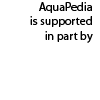Umatilla County Critical Groundwater Task Force: Community-Based Approaches to Conflict Management
About this Article
Contributed by: Aaron T. Wolf, Joshua T. Newton, Matthew Pritchard
Article Type(s): Analysis
Contributor Perspective(s): Academic
Article last edited 12 Feb 2013 by Amanda
Article originally added by Mpritchard
What is an ASI Article? Individuals may add their own Analysis, Synthesis, and Insight (ASI) to a case by linking a case to an ASI article. These ASI articles are protected, so that each person who creates a section retains control of their own content. Please use the discussion page for commenting on this article. Learn More
This article is linked to Addressing Declining Groundwater Supply in Umatilla County, Oregon, USA
The points below are summarized or excerpted from the Oregon State University Transboundary Freshwater Dispute Database (TFDD). Matthew Pritchard provided this and other summarized analysis or insights from the TFFD on behalf and with permission of the original authors. Available on-line at: http://www.transboundarywaters.orst.edu/
The Board of Commissioners used a task-force approach to examining the basin-wide issues effecting designated Critical Groundwater Areas (CGAs) and water deficits. This analysis discusses the selection, goals, tasks, and approaches of this task force.
Task Force Analysis
The driving force behind the development of the Umatilla County Critical Groundwater Task Force was the state-designated Critical Groundwater Areas (CGAs). In 2003 a hearing was called by the Umatilla County Planning Commission to propose the implementation of a land use overlay zone located within the boundaries of the CGAs. A vast majority of individuals who opposed the plan suggested that Umatilla County establish a community based group comprised of local citizens to address the water resource management issues rather than implementing the land use overlay zone, which would only restrict a few domestic wells. The Planning Commission and the Umatilla County Board of Commissioners appointed a 20 member Umatilla County Critical Groundwater Task Force to be responsible for both short and long term planning for water resource issues.
The Critical Groundwater Areas primarily are located within the western portion of Umatilla County and the Planning Commission recognized that basin-wide water use needed to be addressed before any plans were developed. The members of the Task Force were chosen based upon their respective geographic areas rather than vocational, urban, or Tribal designations. Members were selectively chosen by the Board of Commissioners based upon level of commitment to resolve the water management issue, not to represent vested interests or groups.
The initial doctrine of the Task force had two goals:
- Determine a solution to the current groundwater issues in west Umatilla County
- Develop and design a water resource management plan comprehensive enough to assure that current and future use occurs in a sustainable manner.
The Task Force approached the water deficits with 4 different approaches after including public input which were:
- Distributing surface water supplies from the Columbia River to reinforce groundwater through collaborative efforts with current or future undetermined projects with the U.S. Bureau of Reclamation, or regional infrastructure investments
- Providing more funding to studies and investigations of groundwater resources to increase the accuracy of estimates of reserves
- Developing a water rights exchange to recognize and acknowledge the Tribal water and fisheries rights
- Increasing the efficiency of the management of existing water rights
| ASI | ASI:Umatilla County Critical Groundwater Task Force: Community-Based Approaches to Conflict Management + |
| ASIContributor | Aaron T. Wolf +, Joshua T. Newton + and Matthew Pritchard + |
| Article Creator | Mpritchard + |
| Case Study | Addressing Declining Groundwater Supply in Umatilla County, Oregon, USA + |
| Last Edited | 12 February 2013 + |
| Last Edited User | Amanda + |
| Perspective | Academic + |
| Reflection Type | Analysis + |
 There are no
There are no 


